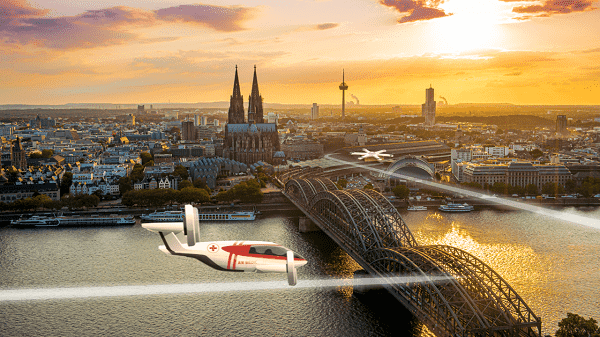It’s 2023: Do You Know What the State of Urban Air Mobility Is?

There’s been a lot of discussion and a lot written about the coming revolution in air transportation and the ecosystem necessary to support it. (Mea culpa: We at AeroCar Journal are guilty on the count of content published about urban/advanced air mobility.)
A group of researchers hailing from Switzerland to South Florida, and New York to Greece, set out to aggregate what is known so far about the pending adoption of crewed and uncrewed eVTOLs: Who’s most likely to use them first; who’s likely to oppose them and why; what regulatory hurdles remain to be addressed, and several other issues.
You might think of it as the UAM equivalent of journalism’s “five Ws,” plus one: Who, What, Where, When, Why, and, Why Not?
An early not-yet-peer reviewed of their study, “The State of Urban Air Mobility Research: An Assessment of Challenges and Opportunities,” revealed the following opportunities:
- UAM transportation will be popular with young people, those with college educations, and high-income households.
- Tech-savvy and environmentally conscious people, those familiar with advanced vehicle features, and frequent air travelers are expected to be more likely to be early adopters of this technology.
- Long-distance intercity and recreational trips have been identified as favorable use cases. For shorter trips of five minutes or less, UAM usage has been generally identified as unfavorable.
- Faster and more reliable travel time in congested city environments has been identified as the most desirable benefit offered by this technology.
The research also highlighted these challenges UAM will need to address to ensure successful adoption in the private and public sectors:
- Societal challenges and concerns include noise and visual pollution as well as high turbulence induced annoyances in residential areas.
- Technical challenges include the necessity of a highly automated and reliable air traffic control system, a reliable communication infrastructure, an extensive pilot training and certification process for human piloted operation, certification of safety-critical autonomous piloting software, and an efficient integration framework for UAM and other currently existing transportation modes.
- From a regulatory perspective, a rigorous airspace regulatory framework is warranted to ensure safe usage by the airspace users.
- For the UAM aircraft, minimum performance, safety, and physical dimension standards are needed, along with the design standards for vertiports.
- Regulations defining the maximum noise thresholds, energy consumption, and emission standards are also needed.
- Safe and secure operation of UAM would rely on reliable wireless communication framework, warranting rigorous regulatory framework to standardize the minimum requirements.
- In the event of accidents involving UAM aircraft, investigations would need to be carried out quickly and efficiently to identify the cause.
- Tools (comparable to airplane black box) that enable post-crash investigation would need to be mandated in UAM aircraft design.
- Studies forecasting UAM demands have generally demonstrated that UAM would occupy a minor amount of overall market share and would be costly in the near-term and even with a marginal cost reduction in the long-term, the technology as still likely to be a niche segment.
- Moreover, if UAM services are offered in routes already served by public transportation systems, there is ample evidence from past studies that public transit ridership can be expected to drop, which is undesirable from a transportation equity perspective and would need to be mitigated through appropriate regulations.
So, is UAM a plus or a minus for humankind? Do the benefits outweigh the risks? We don’t know all the answers yet. But, for now, some of us seem to be asking the right questions.
#evtols #uam #aam #aerocarjournal #usf.edu #auth.gr #unil #buffalo.edu


